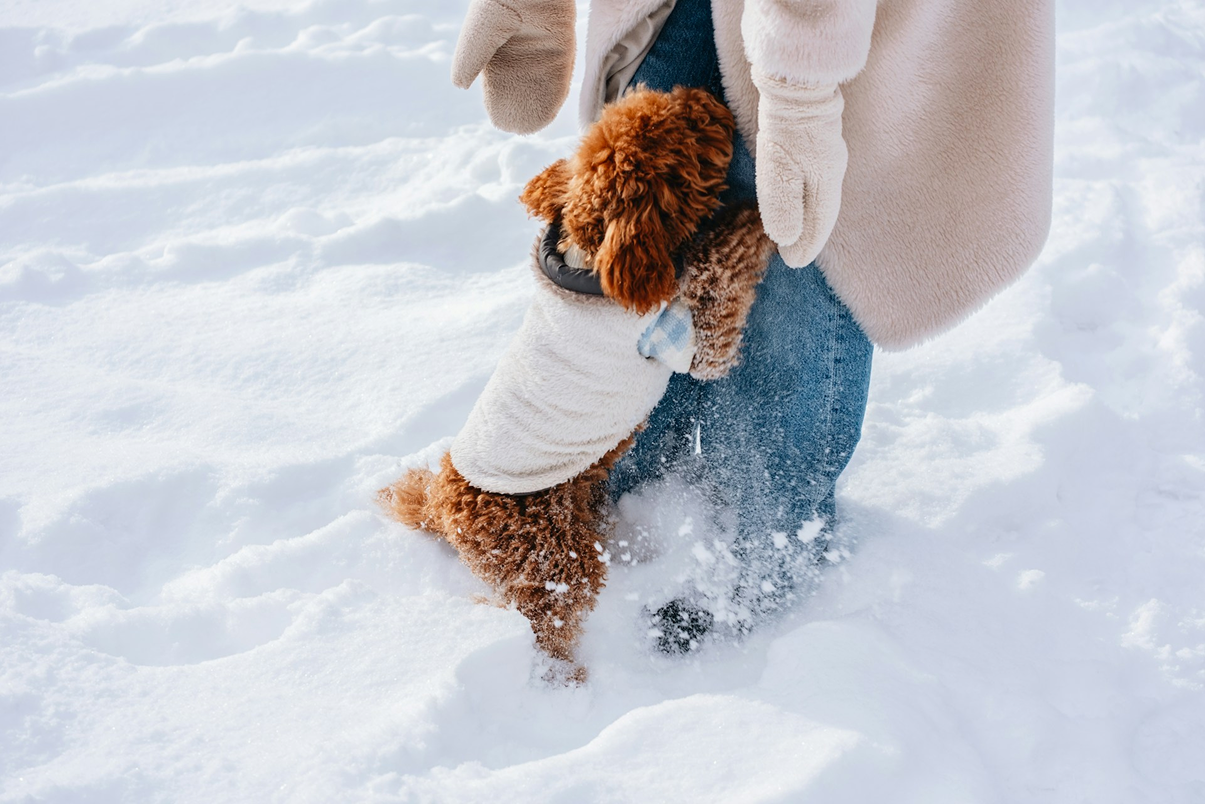
As temperatures dip across Alberta, it’s not just humans who feel the chill, it’s important to remember our pets do too. The colder months require a few extra steps to keep your animal companions healthy and comfortable. At Ayre & Oxford, we’ve put together some helpful cold weather pet care tips for tenants and prospective renters looking to create a safe, cozy environment for their furry family members.
Keep Indoor Spaces Warm and Comfortable
Just like us, pets prefer a warm and draft-free home when winter settles in. If you live in an apartment, check for drafts near windows and patio doors. A simple weatherstrip or thermal curtains can help keep heat inside while ensuring your pet has a cozy spot to relax. Many pets gravitate toward warm surfaces, so providing a soft blanket, pet bed, or heated pad (used safely and according to manufacturer guidelines) can go a long way in keeping them comfortable.
Limit Outdoor Exposure During Frigid Temperatures
Even animals with thick coats can struggle in freezing temperatures. Try shortening winter walks, especially during extremely cold snaps, and opt for more frequent but shorter outings. If you have a dog that loves to explore, consider investing in a winter coat or insulated sweater for added protection. Booties can also protect their paws from ice and salt on sidewalks.
Be Mindful of Paw Health
Sidewalk salt, ice, and snow can all take a toll on your pet’s paws. After each walk, gently wipe their feet with a warm, damp cloth to remove salt and debris. This prevents irritation and stops them from ingesting harmful substances when they lick their paws. Regularly check between the toes for redness or cracking, and apply a pet-safe balm if their pads seem dry.
Maintain a Healthy Routine Indoors
Colder weather often means pets spend more time inside, which can lead to boredom or pent-up energy. Create a stimulating indoor routine with toys, scratching posts, puzzle feeders, and playtime. A little extra engagement not only keeps pets mentally active but also helps prevent unwanted behaviours caused by restlessness.
If you’re living in a rental with shared hallways or common areas, remember to keep your pet leashed when passing through communal spaces. This ensures their safety and respects fellow residents who may not be comfortable around animals.
Watch for Seasonal Hazards
Winter comes with hazards that often go unnoticed. Antifreeze, for example, is highly toxic to pets and can sometimes be found in parking areas or garages. Always keep an eye out for puddles when walking near vehicles and avoid letting pets sniff or step in suspicious liquids.
Space heaters can also pose a risk. While they do a great job of warming up a room, pets might try to curl up beside them for extra warmth. To keep your home safe, always supervise pets when a space heater is running, and be sure to unplug it whenever you leave the room.
Adjust Feeding as Needed
Some pets may need slightly more calories during winter, particularly active dogs who spend a lot of time outdoors during the colder months. Indoor-only pets, on the other hand, will likely need to maintain their usual diet. When in doubt, consult your veterinarian before making significant changes to their feeding routine.
Create a Safe Haven for Stormy Days
Alberta’s winter storms can bring loud winds, heavy snowfall, and sudden temperature drops. Some pets become anxious during harsh weather, so setting up a quiet, calm space in your home can help soothe their nerves. A familiar blanket, low lighting, and background noise, like soft music, can make stormy nights more comforting.
